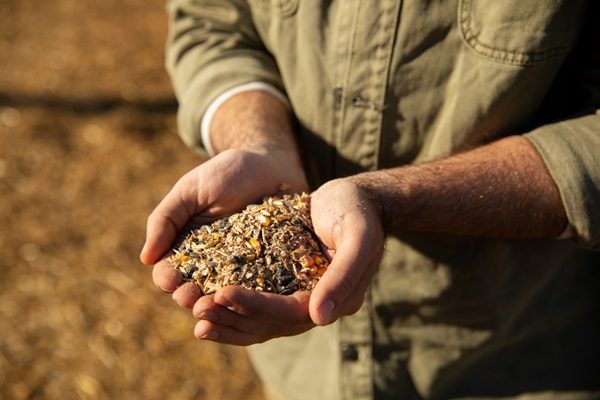Mastering the Art of Succession Planting for Continuous Vegetable Production
For gardeners looking to maximize the yield from their vegetable gardens, succession planting offers an effective strategy to ensure continuous production from seed to harvest. By strategically timing your planting, you can enjoy a steady supply of fresh vegetables throughout the growing season, making the most of your garden space and your effort.
What Is Succession Planting?
Succession planting is the practice of planting crops in a sequence so that they mature at different times, allowing for a continuous harvest. Instead of planting everything all at once, you stagger your planting dates, which means as soon as one crop is harvested, another is ready to take its place. This technique not only maximizes your garden’s productivity but also ensures that you have a constant supply of fresh produce.
Why Succession Planting Is Essential for Vegetable Gardens
Succession planting is a key strategy for gardeners who want to make the most out of their growing space. It’s particularly valuable for small gardens where space is limited, but it’s also beneficial for larger gardens where efficiency and yield are top priorities. By mastering succession planting, you can avoid the common pitfall of having all your crops ready for harvest at the same time, which can lead to waste if you can’t consume or preserve them all.
Planning Your Succession Planting Schedule
The success of succession planting lies in careful planning. To achieve continuous production from seed to harvest, it’s essential to map out your planting schedule based on the specific growing conditions of your garden, the crops you want to grow, and the length of your growing season.
Understanding Your Growing Season
The first step in planning your succession planting schedule is understanding your growing season. This includes knowing your local climate, the average last frost date in spring, and the first frost date in fall. These dates will help you determine when to start your seeds and when to plant them outdoors.
- Calculate Your Growing Days: The time between your last spring frost and first fall frost gives you the number of growing days you have available. This is crucial for determining which crops to plant and when.
- Choose Crops Wisely: Select crops with varying maturity times to ensure a steady harvest. For example, plant quick-growing vegetables like radishes and lettuce early in the season, followed by slower-growing crops like tomatoes and peppers.
Staggered Planting Intervals
Staggered planting is the heart of succession planting. By sowing seeds or transplanting seedlings at regular intervals, you can spread out your harvest over several weeks or months.
- Weekly Planting: For crops like lettuce or radishes that mature quickly, plant a new batch every one to two weeks. This ensures that as one batch is harvested, the next is ready to take its place.
- Every Few Weeks: For longer-maturing crops, such as carrots or beans, plant a new row every three to four weeks.
- Seasonal Rotation: Rotate crops that prefer cooler temperatures (like spinach and peas) with those that thrive in the heat (like cucumbers and squash) to keep your garden productive from early spring to late fall.
Best Crops for Succession Planting
Certain vegetables are particularly well-suited for succession planting due to their growth habits and the time they take to mature. By choosing the right crops, you can optimize your garden’s output and ensure a continuous harvest.
Fast-Growing Vegetables
Fast-growing vegetables are perfect for succession planting because they can be sown and harvested multiple times throughout the growing season.
- Radishes: Ready to harvest in as little as three to four weeks, radishes are ideal for weekly succession planting.
- Lettuce: Leaf lettuce varieties can be harvested in as little as 30 days. Sow seeds every two weeks for a continuous supply.
- Spinach: Spinach grows quickly in cool weather. Plant a new batch every two weeks in early spring and fall for a steady harvest.
Long-Season Crops
Long-season crops require more time to mature, but with careful planning, you can plant them in succession to avoid gaps in your harvest.
- Carrots: Carrots take about 70-80 days to mature. By planting every three weeks, you can have fresh carrots throughout the growing season.
- Beans: Bush beans mature in about 50-60 days. Plant new rows every three weeks to ensure a continuous harvest.
- Broccoli: Broccoli can be harvested in about 60-100 days, depending on the variety. Plant a new batch every four weeks for a consistent supply.
Managing Your Garden for Continuous Production
Effective succession planting requires diligent garden management. This involves regular monitoring of your crops, timely planting, and making the most of your available space.
Soil Preparation and Fertility
Healthy soil is the foundation of any successful garden, and this is especially true for succession planting. As crops are harvested and new ones are planted, the soil can become depleted of nutrients.
- Composting: Incorporate compost or organic matter into the soil between plantings to replenish nutrients and improve soil structure.
- Crop Rotation: Rotate crops to different areas of your garden each year to prevent the buildup of pests and diseases and to ensure soil fertility.
- Mulching: Use mulch to conserve moisture, suppress weeds, and maintain a consistent soil temperature.
Efficient Use of Garden Space
Maximizing your garden space is crucial for successful succession planting. By utilizing every inch of your garden effectively, you can increase your yield and ensure continuous production.
- Interplanting: Plant fast-growing crops like radishes or lettuce between slower-growing crops like tomatoes or corn. The fast growers will be harvested before the slower ones need more space.
- Vertical Gardening: Use trellises, cages, and stakes to grow climbing plants like beans, peas, and cucumbers vertically, freeing up ground space for other crops.
- Square Foot Gardening: This method involves dividing your garden into square-foot sections, allowing you to plant different crops in each square. It’s an efficient way to manage space and plan your succession plantings.
Monitoring and Adjusting Your Plan
Succession planting is not a set-it-and-forget-it method. It requires ongoing attention and flexibility. Weather conditions, pests, and plant performance can all impact your plan, so it’s essential to monitor your garden regularly and make adjustments as needed.
- Keep Records: Maintain a garden journal to track planting dates, harvest times, and any issues that arise. This will help you refine your succession planting strategy year after year.
- Adjust for Climate: If a particular crop is struggling due to unexpected weather, be prepared to replant with a more suitable variety or switch to a different crop altogether.
- Stay Flexible: Succession planting requires adaptability. Be ready to make changes to your schedule based on the performance of your crops and the condition of your garden.
Conclusion: Achieving Year-Round Harvests with Succession Planting
Mastering the art of succession planting can transform your vegetable garden into a highly productive space that provides fresh produce from seed to harvest. By carefully planning your planting schedule, choosing the right crops, and managing your garden effectively, you can enjoy a continuous harvest throughout the growing season.
Ready to start succession planting in your garden? Begin by mapping out your planting schedule and selecting a few crops to experiment with. Over time, you’ll develop a system that works best for your garden’s unique conditions. For more tips and tricks on maximizing your garden’s potential, explore our other blog posts.


Leave a Reply